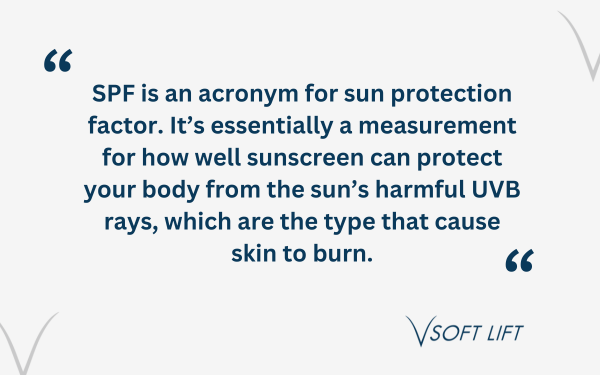
Many people only think to put on sunscreen during warmer months and when they’re going to be spending the day at the park, the beach, the pool or other outdoor attractions. So much recent research has shown that’s a mistake, though, as the sun’s harmful rays can cause significant damage to our skin year-round.
That’s why the American Academy of Dermatology, and many other organizations, suggest that you should apply sunscreen to your skin every day. It helps to prevent sunburn, which can lead to premature signs of aging as well as skin cancer.
Sunscreen can be rather confusing, though. Can you use the same sunscreen for your entire body, or should you use different sunscreen for more sensitive areas such as your hands and face?
As we’ll dive into below, it’s very important to use special sunscreen formulated just for your hands and face, as it can provide better protection. But, what SPF sunscreen should you use for hands and face?
Sunscreen can be rather confusing. Can you use the same sunscreen for your entire body, or should you use different sunscreen for more sensitive areas such as your hands and face?
Table of Contents
Add a header to begin generating the table of contents
 Medically reviewed by: Elizabeth Williams RN
Medically reviewed by: Elizabeth Williams RN
Updated: 3/6/2025
What Does SPF Mean?
One of the biggest misconceptions in sunscreen is what SPF actually means. We all see the numbers on the side of the bottles — SPF 30, SPF 50, etc. — but do you know how to use that information to keep you protected?
SPF Comparison Table
| SPF Level | UVB Protection | Recommended For |
|---|---|---|
| SPF 15 | 93% | Minimal exposure, daily use indoors |
| SPF 30 | 97% | Standard outdoor protection |
| SPF 50 | 98% | Fair skin, extended sun exposure |
| SPF 100 | 99% | Very sensitive skin, extreme sun exposure |
SPF is an acronym for sun protection factor. It’s essentially a measurement for how well sunscreen can protect your body from the sun’s harmful UVB rays, which are the type that cause skin to burn.

The SPF number specifically indicates how long your skin will redden while you’re using that product versus if you don’t wear sunscreen in the exact same circumstances. For instance, if you wear sunscreen with SPF 30, it will take your skin about 30 times longer to turn red than if you wore no sunscreen at all.
One other important thing to note here is that the sun has two types of harmful rays, UVB and UVA, but SPF only refers to protection against UV rays. That’s why it’s very important to choose a sunscreen that provides “broad-spectrum” protection.
This is especially important, as things such as glass can largely block out UVB rays, but can only prevent about half of UVA rays from penetrating glass. This means UVA rays can cause damage even if you’re in a car with the windows rolled up.
What SPF Sunscreen Should You Use for Hands and Face?
Most dermatologists and other experts recommend that people wear sunscreen that has at least SPF 30. At the same time, when you are dealing with sensitive parts of your body such as your hands and face, it’s important to ensure you are well-protected.
As such, it might be a good idea to choose a sunscreen with an SPF 50 to use on your hands and face. You may also choose a sunscreen with a higher SPF like this if skin cancer runs in your family, if you have fair skin or if you’re going to be spending a lot of time outdoors on a particular day.
Keep in mind that it’s very important that you choose a sunscreen that provides broad-spectrum protection so you protect against UVA and UVB rays.
Sunscreen for Hands vs. Face
| Feature | Body Sunscreen | Face/Hand Sunscreen |
|---|---|---|
| Texture | Thicker, may feel greasy | Lightweight, non-greasy |
| Ingredients | May contain fragrances | Often fragrance-free, sensitive-skin-friendly |
| Protection | General sun protection | Enhanced UV protection, anti-aging benefits |
| Absorption | Slower, may leave residue | Fast-absorbing |
Choose a Sunscreen Made Just for Hands and Face
You should also consider using a sunscreen product that’s developed specifically for sensitive parts of your body such as your hands and face. Skinplan Suncontrol, for example, provides you with the best protection on the market for these sensitive parts of your body.

Not only that, but it takes the guesswork out of how often you should reapply and actually personalizes that process as well. The high-quality sunscreen is made from only the finest ingredients that are specifically formulated for your hands and face.
About 30 minutes before you are going outside, apply Skinplan Suncontrol well over your entire face and hands, covering all areas of your body that are going to be exposed to the sun.
Look at the label on the packaging and identify your specific skin tone from the five options listed. Then, measure the sun’s intensity using the UV sensor under the lid. Finally, simply match that strength with your skin tone, and determine on the chart provided what your safe sun exposure time is.
This personalized method allows you to simply set a timer so you won’t forget when to reapply so you have the best protection possible.
Personalized Sunscreen Usage Based on UV Strength
| UV Strength | Skin Tone 1 (Fair) | Skin Tone 2 (Medium) | Skin Tone 3 (Dark) |
|---|---|---|---|
| Low (1-2) | Safe for longer durations | Safe for longer durations | Safe for longer durations |
| Moderate (3-5) | Moderate sun exposure recommended | Moderate sun exposure recommended | More resistant to UV exposure |
| High (6-7) | Requires frequent protection | Requires regular protection | Needs protection |
| Very High (8-10) | High risk of sun damage | High risk of sun damage | Still susceptible to sunburn |
Get the Best Protection from the Sun with Skinplan Suncontrol
Protecting your skin from the sun’s harmful UVA and UVB rays is essentially. Wearing sunscreen with the appropriate SPF every day is a major step in doing so.
But, choosing a sunscreen that’s appropriate for your skin type and that’s formulated specifically for your hands and face is important, too. With Skinplan Suncontrol by VSoft, you can ensure you’re always protected.
We take the guesswork out of sun protection and reapplication.
For more information, contact us today.
